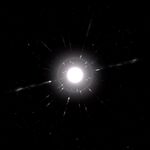Astroengineering
From Halopedia, the Halo wiki
Template:Ratings Template:SeeWikipedia
Astroengineering is name given to the construction of megastructures in space by technologically advanced beings. It is a form of megascale engineering, but deals with structures that are "easily observable" from interstellar or even intergalactic distances with 20th century astronomical instruments: i.e. An orbital elevator is an example of megascale engineering, but it is not an example of astroengineering. Typically proposed feats of astroengineering are on the scale to remake an entire stellar system.
Construction of these megastructures seems to be restricted to either Tier One or Tier Two civilizations. Although listed as a Tier Three civilization, the UNSC has no known megastructures.
Forerunners
The Forerunners are renowned for their mimicry of natural environments, but it is their engineering achievements that stand as monuments to their extraordinary prowess, centuries after they have passed on. Their Halo Installations, Shield Worlds, and the Ark are all artificial habitats on a vastly larger scale than anything that either humanity or the Covenant could have accomplished. All known Forerunner megastructures are a part of the Halo Array.
Types
The Forerunners used a variety of different concepts in their constructions, each unique in many ways, offering their own advantages and disadvantages.
Orbitals
- Main article: Halo

The Halo Installations are planet-sized artificial worlds, shaped like a ring. The interior surface contains a breathable atmosphere and seemingly natural terrain, including oceans, lakes, mountains, forests, and tundras. Underneath this is a support layer, upon which this terrain has been put in place, consisting of a vast grid network of metallic plates that provide the base. Though centrifugal forces may provide at least some of a Halo installation's gravity, it also uses artificial gravity generators to generate Earth-like gravity.[1]
The exact size of a Halo seems to vary. Alpha Halo has a diameter approximately equal to that of Earth[2], but Delta Halo was described as being only as large as a moon[3]. Because these are the only two known Halo Installations, it remains to be seen whether these are standard sizes or whether each Installation is different in size and structure.
The Halo's were constructed as weapons of mass destruction on a galactic scale, designed to kill all sentient lifeforms in their radius of effect, approximately 25,000 light-years. The exact means by which they do this is unknown, but the fact that the Flood that was imprisoned upon them survived the previous activation[4] may mean that those on its surface may be immune from the Halo's effect. Their habitability lends further credence to this theory.
Artificial Planets

The Forerunners were also adept at creating artificial planets, such as Onyx. Internally, the structure is maintained by, and even composed of, trillions of Sentinels and Production Factories, while externally the planet can appear like many other terrestrial planets, with a wide variety of terrain.
A variation of the concept also exists, built in a more conventional fashion. It's a structure whose surface is composed of an outer shell, with a hollow interior and a habitable inner surface, and a miniaturized star in the center. It resembles a Dyson Sphere, though on a far smaller scale.
Onyx
- Main article: Onyx
The artificial planet Onyx was used as a cover for the Shield World in it's core. It was later colonized by the UNSC, oblivious as to its true origins until 2552, when its Sentinels activated to defend the Shield World. It was later damaged by FENRIS Nuclear Warheads, and destroyed as its Sentinels burst free and set up defensive stations around the Shield World portal.[5]
Flood-Controlled Shield World
- Main article: Shield World (Halo Wars)
Unlike Onyx, this Shield World was a hollow spherical shell with a terraformed inner surface and an internal sun. The installation's outer surface was heavily infested by the Flood. With an approximate diameter of 2900 kilometers[6], it's one of the smallest Forerunner megastructures. It was destroyed by the UNSC forces in 2531 when the overloaded Slipspace Drive of UNSC Spirit of Fire sent the internal star to Supernova state.
Micro-Dyson Spheres
- Main article: Shield World
The Forerunners also constructed massive Dyson Spheres, with a 2 AU diameter[7], encapsulating them in a slipspace field to protect them from the Halo Array as it activated. Essentially a sphere, with its habitable surface on its internal surface rather than external, Shield Worlds are also equipped with their own stars[8], providing warmth, light and energy to the installation. Originally intended as a way to circumvent the Halo effect, the Shield Worlds were not put into use by the Forerunners due to the rampant actions of one of their own AI constructs.[9]
Alderson Disks
- Main article: Installation 00
The only known Alderson disk constructed by the Forerunners is Installation 00. However, the structure differs from the concept of an actual Alderson Disk by not having a star in the center and having curved arms instead of being a flat disk. With a diameter of between 90,000 and 100,000 kilometers[10], and a larger total surface area than a Halo Installation, it incorporates many similar elements, including Earth-like gravity and atmosphere and a rich and diverse ecosystem. Located in the center of the Installation is a small planetoid, presumably used for raw materials, and a star orbiting nearby despite its location: 218, or 262,144 light years outside of the Milky Way Galaxy, where stars cannot naturally form.[11]
Rather than being a superweapon, like the Halo's, the Ark functions as both a control center for the entire array and as a construction facility for Halos, using the planetoid to provide metals, gases, elements and other resources needed for reconstruction. After the construction is complete, the Halo is transported to the site of its predecessor via a slipspace portal.
Stars
The Forerunners had the ability to either create artificial stars, or move existing stars across distances of thousands of lightyears, either of which would be a tremendous technological feat. One star was used in the construction of the Shield World, Onyx, while an artificial star, created just for it, orbited Installation 00. The Flood-Controlled Shield World also had a miniaturized artificial star in its center.
Covenant
Though on a far smaller scale, the Covenant have been known to build structures that almost rival those built by the Forerunners that they so revere.
High Charity
- Main article: High Charity
High Charity was the Covenant capital city prior to 2552. Presumed to be built around a chunk of rock taken from the San 'Shyuum's home planet, it was not only an artificial planet, but capable of traveling through slipspace, powered by a surviving Forerunner Dreadnought. It was the largest known Covenant artificial planetoid, at 348 kilometers in diameter, as well as the home of the majority of the San 'Shyuum population, and was infested by the Flood, and eventually destroyed by Spartan-117.
Unyielding Hierophant
- Main article: Unyielding Hierophant
The Unyielding Hierophant was a space station in Tau Ceti, a former UNSC colonized star system. Approximately 10 kilometers long, with two bulbous sections joined by a docking ring at the middle, it was a significant Covenant military base in the region, capable of resupplying up to 500 warships and carried thousands of Covenant personnel internally, including Banshee and Wraith pilots. It too was destroyed by Spartan-117.
Construction
- "A Halo’s construction is executed [by] armies of Sentinels: some are the size of cities. [Viewing the picture of the] reconstituted asteroid material, you can see the process of skinning the Halo. There are four huge terraforming factories moving across the face of the Halo. They hold in the atmosphere which would leak out across the face, eventually pouring through the super structure, tugged into place by centrifugal force."
- — The Art of Halo 3[12]
The exact methods used by the Forerunners to construct these artificial worlds is unknown. Presumably, large numbers of Constructors and Sentinels play a role in the construction process, laying down the initial structure. Over this is laid a vast network of scaffolding, over which the artificial environment is placed, including earth, rocks, and significant quantities of water.
The Ark plays a significant and noteworthy part in construction, and is the location where replacement Halo Installations are built and later transported, should one be destroyed by the Flood or opposing forces. Although the Ark constructs smaller installations, it is unknown how the Ark was initially built.
Rather than creating entirely artificial structures, the Covenant uses a different approach, using a natural body as the base upon which added layers are added. The Unyielding Hierophant was built around an asteroid, with the reactors and bulbous sections added after it had been hollowed out. Likewise, High Charity is likely built around a fragment of the original San 'Shyuum home world, though it has never been explicitly stated.
Sources
- ^ Halo: The Flood, pg. 14
- ^ Halo: The Flood, pg. 13
- ^ Halo: Ghosts of Onyx, pg 188
- ^ Halo: Combat Evolved
- ^ Halo: Ghosts of Onyx, pg. 377, 378
- ^ http://www.youtube.com/watch?v=A8lxRH9zqWw
- ^ Halo: Ghosts of Onyx, pg. 380
- ^ Halo: Ghosts of Onyx, pg. 379
- ^ Halo 3, Terminals
- ^ Carnage Bungie Forum
- ^ Halo 3, The Ark (Level)
- ^ Art of Halo 3, pg. 117

